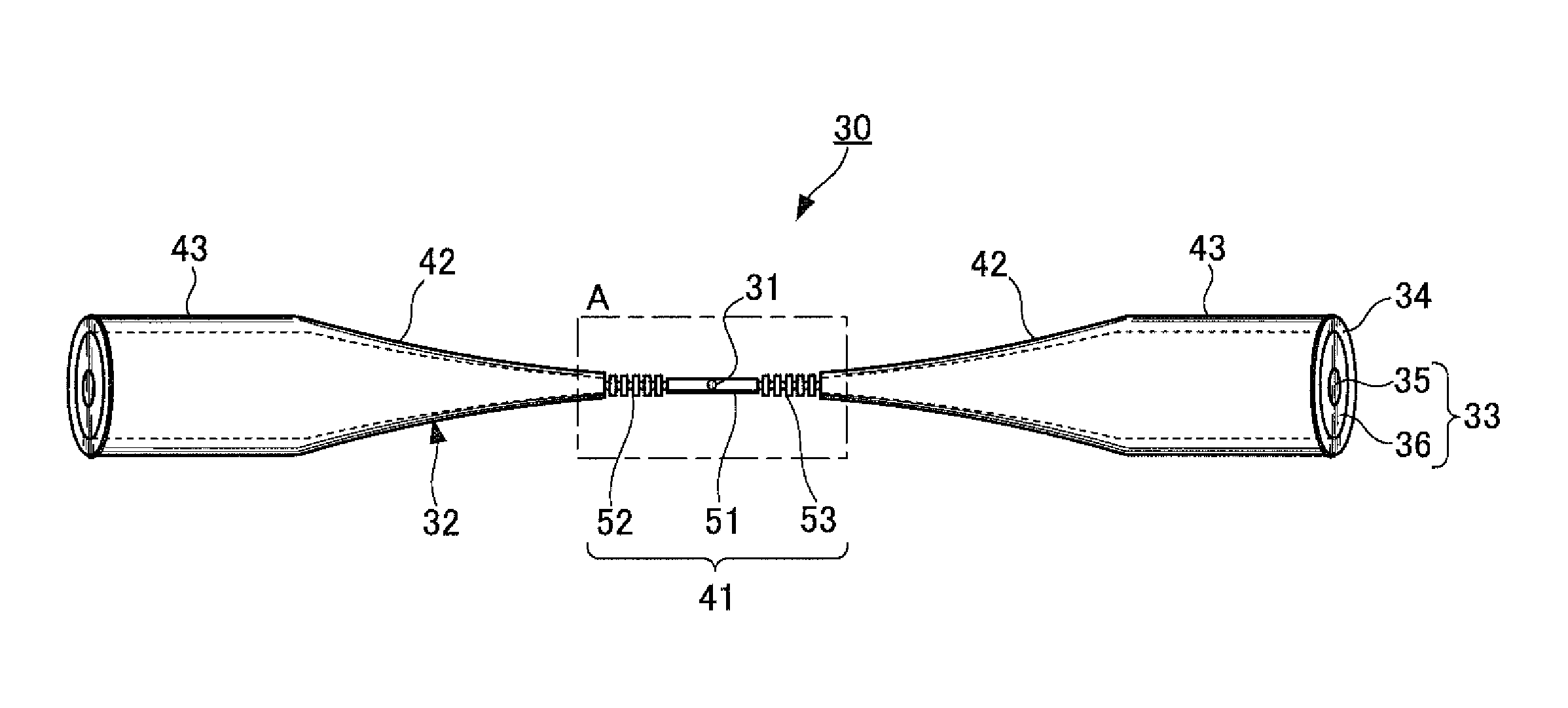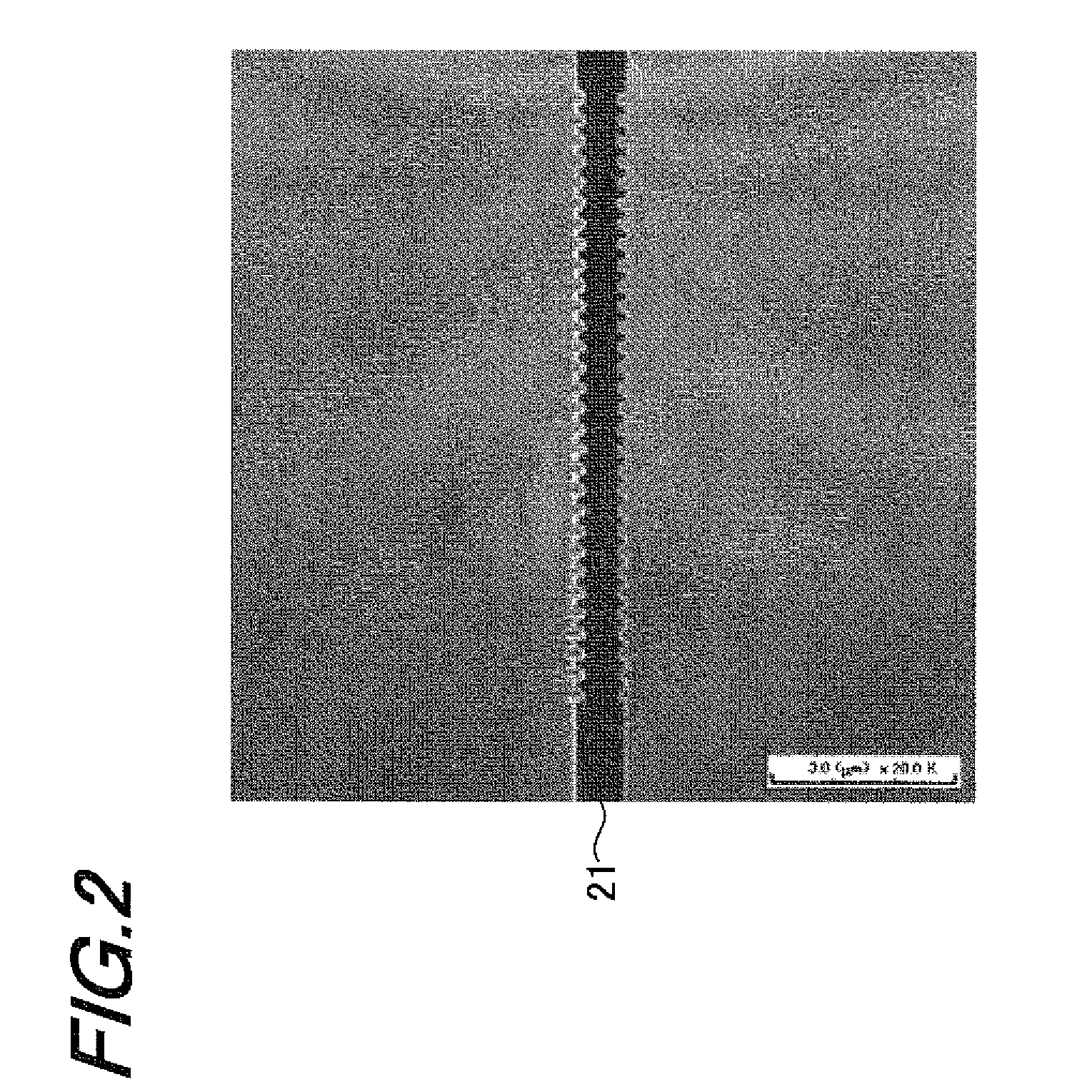Optical nanofiber resonator
a technology of optical nanofibers and resonators, applied in the direction of optical waveguide light guides, instruments, optical elements, etc., can solve the problems of loss while the emitted photons are coupled to the guided mode of optical fibers, and the encryption employed now is not always safe, so as to improve the channeling efficiency of photons
- Summary
- Abstract
- Description
- Claims
- Application Information
AI Technical Summary
Benefits of technology
Problems solved by technology
Method used
Image
Examples
first embodiment
1. First Embodiment
Configuration of Optical Nanofiber Resonator
[0040]FIG. 1 schematically shows the configuration of an optical nanofiber resonator according to a first embodiment of the present invention. The optical nanofiber resonator 10 includes light emitters 1 and an optical nanofiber 2 extending in a predetermined direction (i.e., in the right-left direction of FIG. 1).
[0041]The light emitters 1 are arranged on an ultrafine portion (i.e., a resonator portion 11, which is to be described later) of the optical nanofiber 2. The light emitters 1 are composed of atoms, molecules, quantum dots (artificial atoms) or the like. The light emitters 1 are maintained so as to have discrete energy level (i.e., have quantum character), and if the light emitters 1 are laser-excited, a light (photons) having a predetermined wavelength will be emitted by spontaneous emission. Incidentally, the wavelength of the light emitted from the light emitters 1 varies depending on the kind of the light e...
second embodiment
2. Second Embodiment
Configuration of Optical Nanofiber Resonator
[0111]FIG. 11 schematically shows the configuration of an optical nanofiber resonator according to a second embodiment of the present invention. The optical nanofiber resonator 30 according to the present embodiment includes a light emitter 31 and an optical nanofiber 32. The light emitter 31 may have the same configuration as that of the light emitters 1 of the first embodiment described above.
[0112]The optical nanofiber 32 includes a core portion 33 and a coating layer 34 formed on the core portion 33. The core portion 33 is produced using an optical fiber for communication formed of a material having excellent optical waveguide characteristics (i.e., a material with small photon absorption) such as quartz or the like. Further, the coating layer 34 is formed on a material excellent in workability such as a polymer or the like. Further, in the present embodiment, reflectors are formed in the coating layer 34.
[0113]Furt...
third embodiment
3. Third Embodiment
[0130]In the first and second embodiments, examples are given in which the first reflector and the second reflector are configured by forming a recessed and projected pattern, however the present invention is not limited thereto. Instead of forming a recessed and projected pattern in the optical nanofiber, the reflectors may also be configured, for example, by alternately forming two areas having different refractive indexes along the extending direction of the optical nanofiber. In a third embodiment of the present invention, an example of such configuration will be described below.
[0131]FIG. 14 is a view showing the appearance of an area near a resonator portion (i.e., an ultrafine portion) of an optical nanofiber resonator 60 according to the third embodiment of the present invention. The optical nanofiber resonator 60 according to the present embodiment includes a light emitter 61 and an optical nanofiber 62.
[0132]A resonator portion 71 of the optical nanofibe...
PUM
 Login to View More
Login to View More Abstract
Description
Claims
Application Information
 Login to View More
Login to View More - R&D
- Intellectual Property
- Life Sciences
- Materials
- Tech Scout
- Unparalleled Data Quality
- Higher Quality Content
- 60% Fewer Hallucinations
Browse by: Latest US Patents, China's latest patents, Technical Efficacy Thesaurus, Application Domain, Technology Topic, Popular Technical Reports.
© 2025 PatSnap. All rights reserved.Legal|Privacy policy|Modern Slavery Act Transparency Statement|Sitemap|About US| Contact US: help@patsnap.com



